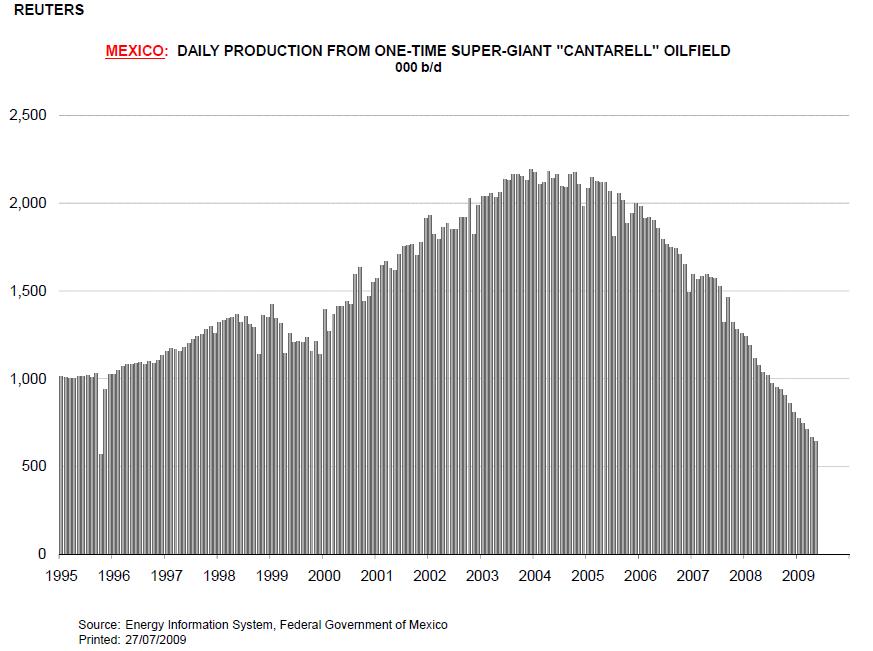Graph of the Day: Daily Production from Mexico’s Super-giant Cantarell Oilfield
The eighth largest oil field in the world will be dead by the end of next year. Shall I repeat that, or did you get it the first time? Like the “Time to Die” speech of Rutger Hauer at the end of Blade Runner, the Cantarell complex has surely seen its share of ocean storms, human hopes, and stars since its discovery by a humble fisherman in 1976. If you’re wondering whether that fisherman has a name, the man who saw oil floating on the surface of the ocean as he gathered his nets, the answer is yes: Rudesindo Cantarell. The days when you could find a supergiant oil field while fishing are over. Cantarell came late, in the oil age. That meant this global giant would receive all the best doctoring modern technology could provide. The result is that Cantarell was pumped out effectively and hard, especially after the technique to re-pressurize the field was adopted. This allowed for a spike high of daily production to be captured for several years, late in its life when a field would otherwise go into gentle decline. The result? Quicker monetization of the oil for the benefit of the Mexican state. But then the price: a catastrophic, fast crash. …
Mexico’s Declining Oil Production: Clarion Call for Cantarell via Peak Oil Journal
